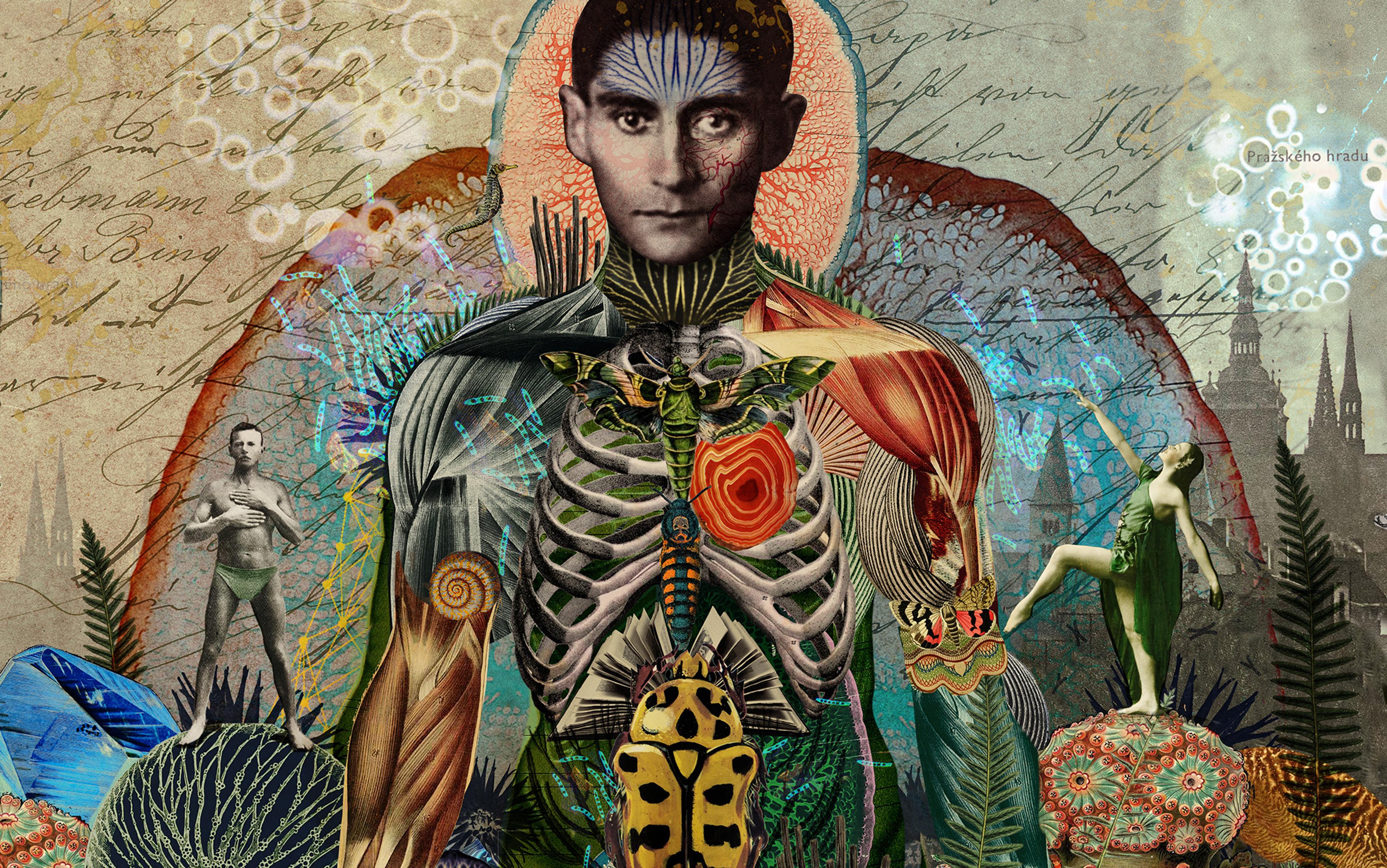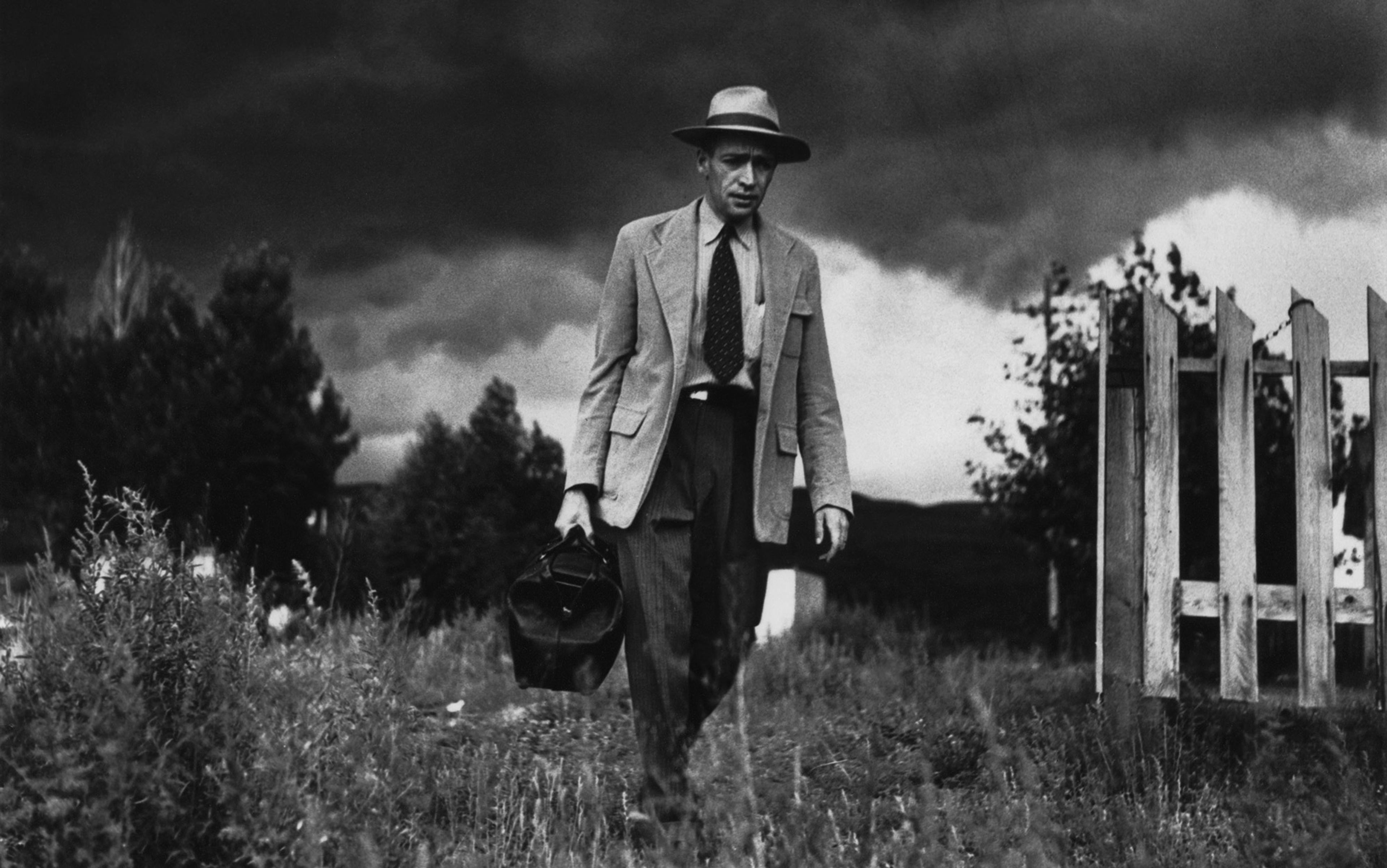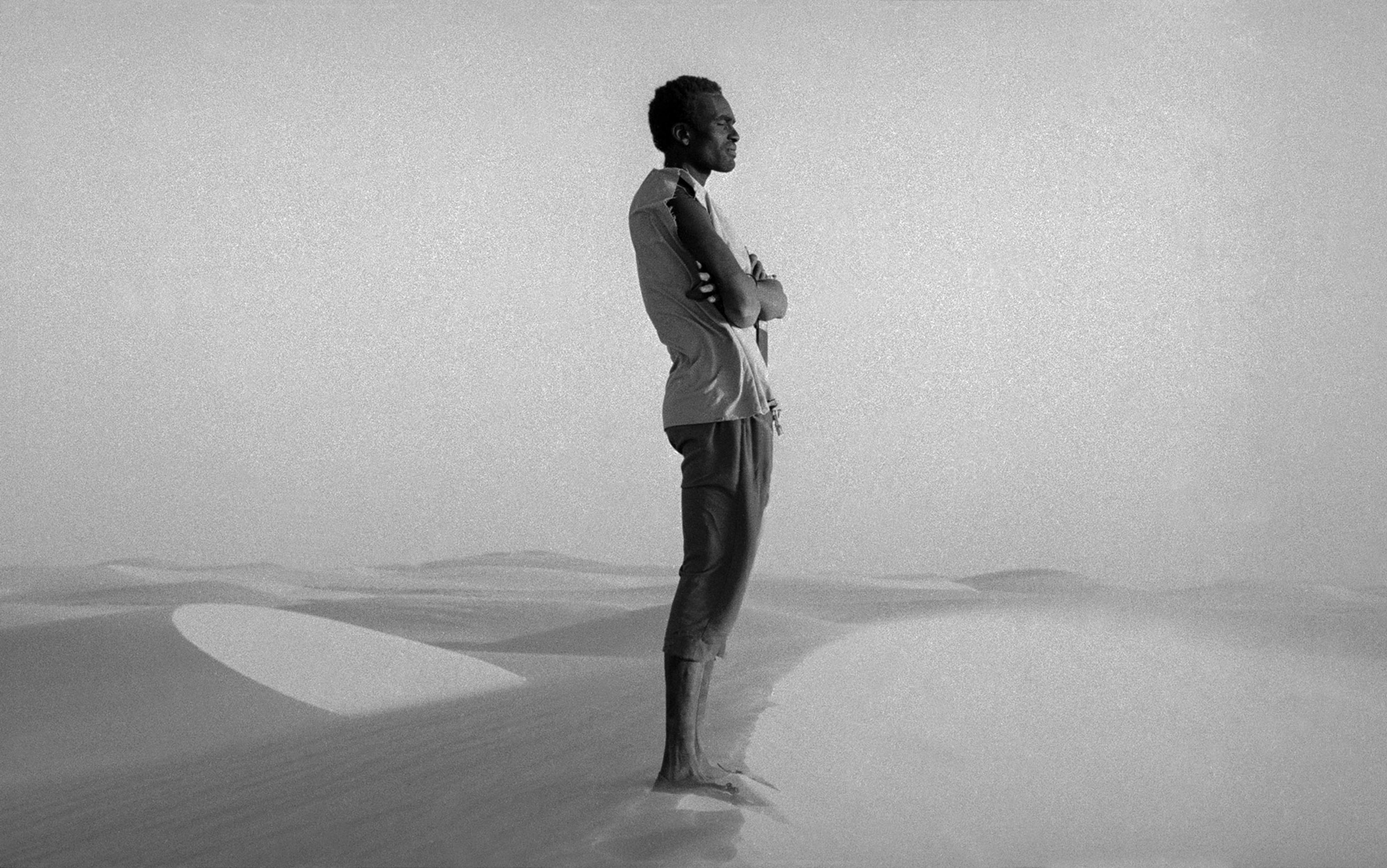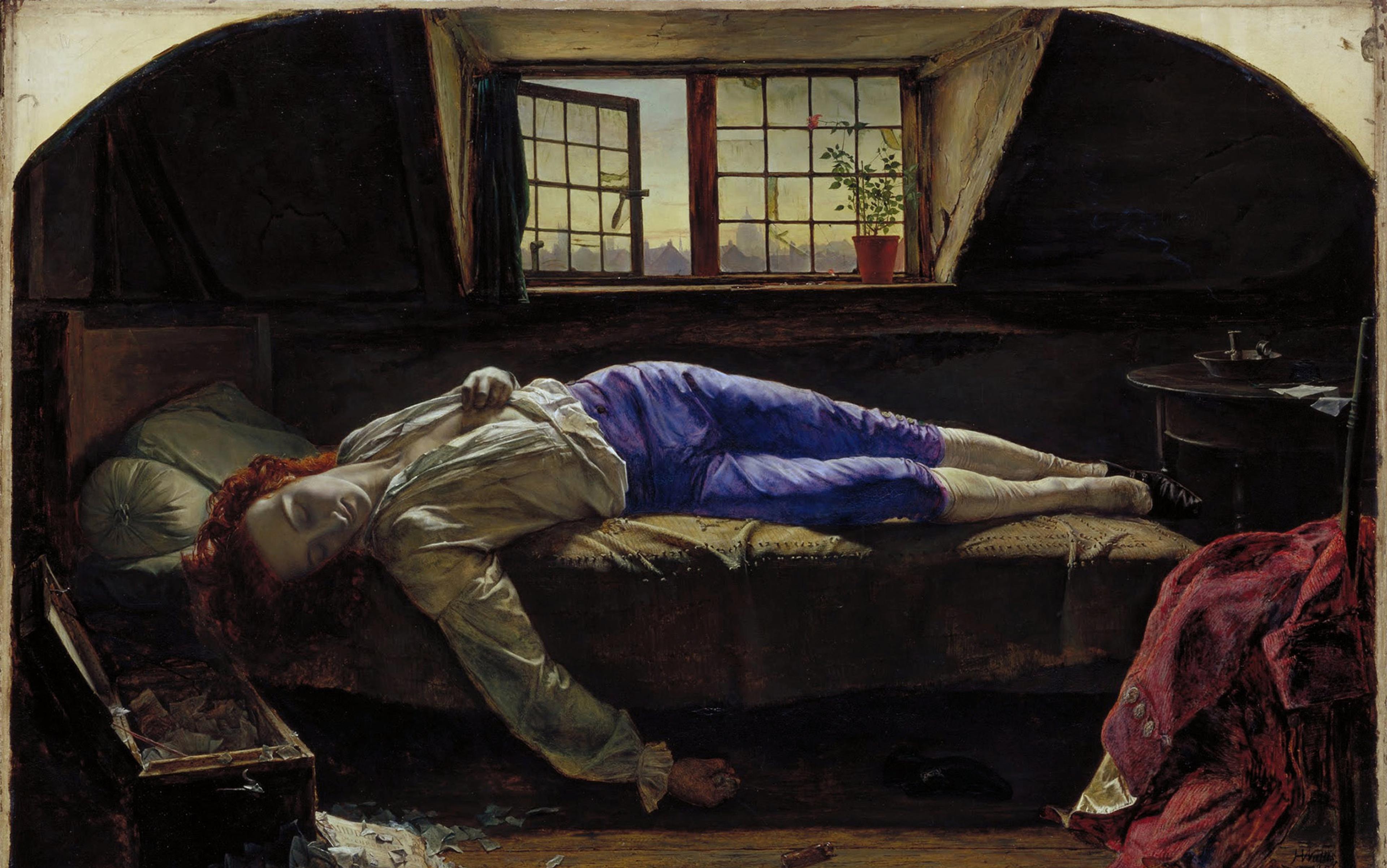Melancholy was the most pervasive and elusive of Renaissance diseases, and Robert Burton (1577-1640) its most dedicated, even obsessive, chronicler. His memorial stone on the wall of Christ Church Cathedral in Oxford is inscribed: ‘Paucis notus, paucioribus ignotus, hic jacet Democritus Junior, cui vitam dedit et mortem Melancholia’ (which I translate as ‘Known to few, unknown to fewer, here lies Democritus Junior, to whom Melancholy gave life and death’). It is characteristic of the man that his final words are both mysterious and mischievous, concealing his real identity behind the pseudonym that made him famous. For it was as Democritus Junior that Burton published his only book, The Anatomy of Melancholy (1621).
His choice of name declares the author to be the heir of the ancient Greek philosopher, who found the world’s follies so absurd that he could only laugh (unlike his counterpart Heraclitus, whose response was to weep). One early source tells the story of how Hippocrates, the father of Western medicine, visited Democritus in his garden at Abdera. He found him dissecting animals, and asked what he was doing. Democritus replied that he was searching for the source of madness, since it afflicted the whole world. When Burton retells this anecdote, he has Democritus looking for the origins not only of madness, but of melancholy. Following in his footsteps, Democritus Junior does the same through the printed page, trying to prove along the way that ‘all the world is melancholy or mad, dotes, and every member of it’.
Melancholy gave Burton his life’s work, as well as an income from his book sales. Whether it gave him death too is harder to say. The younger son of a gentry family from rural Leicestershire, Burton studied at the local grammar schools before going to Oxford, but his undergraduate studies were interrupted for reasons unknown. His age matches the 20-year-old Robert Burton who consulted the renowned astrological physician Simon Forman in 1597 with symptoms of melancholy, and whose history was recorded in Forman’s case notes. Whether or not this was the same man, the author of what is now called the Anatomy (it was ‘Burton’s Melancholy’ in the 17th century) claimed to know the disease through personal experience.

‘A reputation for cheeriness’. Robert Burton (1635) by Gilbert Jackson. Courtesy Brasenose College, Oxford/Wikimedia
Burton eventually completed his degree at Christ Church, and remained there for the rest of his life. He probably worked on the book for more than a decade before its appearance in print. He claims to have lived ‘a silent, sedentary, solitary, private life … penned up most part in my study’, but this is a little disingenuous. He was also a vicar, college librarian and, for a time, clerk of Oxford market; he wrote Latin drama that was performed in his college. The college’s rules forbade him to marry, but a Latin poem prefacing the Anatomy proclaims the author’s fondness for serving wenches, and he had a reputation for cheeriness. While he ‘never travelled but in map or card, in which mine unconfined thoughts have freely expatiated’, he had a special interest in geography (his older brother William wrote a history of Leicestershire).
Several stories attach themselves to Burton. One is that his pastime was to go to Folly Bridge and listen to the bargemen swearing at one another, at which he would hold his sides with laughter. The other is that he forecast the date of his own death, and made sure he was correct by hanging himself. Though unlikely to be true (and the latter story did the rounds of several astrologers’ biographies) these, like many apocryphal anecdotes, are telling of how their subject came to be perceived. They suggest something of the fractured literary persona he presented, both enlivened and afflicted by melancholy.
One of the great achievements of The Anatomy of Melancholy is to draw together the collective wisdom of nearly two millennia on a condition that was alluring and dangerous in equal measure. Melancholy’s dark appeal has long captured the imagination. Among writings once attributed to Aristotle, the question was first posed: ‘Why is it that all men who have become outstanding in philosophy, statesmanship, poetry or the arts are melancholic?’ For the Elizabethan gentleman of leisure, to be painted in the pose of the melancholy man – black clothing, a distracted gaze, perhaps reclining alone by a brook, or leaning against a tree – was the height of fashion. It was also a state he could afford to indulge, since melancholy was brought on by idleness and solitude. For Burton, that cultivated solitude ‘gently brings on like a siren, a shoeing-horn, or some sphinx to this irrevocable gulf’. Melancholy might be a fitting topic for the laughing philosopher, but it is not to be taken lightly.
Though the idea of melancholy continues to hold a fascination and the word remains in currency, its origins are in a medical theory that began to wane not long after Burton’s death. The word’s literal meaning is ‘black bile’, one of the four humours of the human body – along with blood, phlegm and yellow bile – that support life, according to the teachings of Hippocrates and his fellow ancient Greek physician Galen. In a perfectly healthy body, the humours are evenly balanced. In most cases, though, one humour tends to predominate, a factor that influences a person’s temperament. Black bile is the cold and dry humour, the opposite of blood (wet and hot), and tends to affect those who lead inactive lives or whose labour is in the mind rather than the body: scholars, thinkers, writers, artists.
Melancholy can manifest in symptoms close to modern-day depression, or as flatulence or migraines
Even so, one might have a disposition towards melancholy and yet remain healthy through careful self-regulation. However, if the humour becomes excessive, corrupted or burnt (‘adust’), melancholy becomes ‘habitual’, and therefore morbid. This might happen because of poor diet, bad teachers, living in a north-facing house, too much sex or too little (Burton has a special chapter on the melancholy of nuns, maids and widows), bereavement, exile, lack of sleep, or a whole host of other causes. Or it might be simply the effect of ageing: as the body gradually loses its essential heat and moisture, melancholy increases. Hence why the elderly can be lonely and sad, and hence also why they are wrinkly. Humoral theory might have little basis in physiological fact, but it provides a compelling explanation for the business of embodied living.
Burton gives a common definition of melancholy as ‘a kind of dotage without a fever, having for his ordinary companions fear, and sadness, without any apparent occasion’. But in the lived experience of individuals, it escapes easy definition. Of its sufferers, he says that:
They will act, conceive all extremes, contrarieties and contradictions, and that in infinite varieties … Scarce two of two thousand that concur in the same symptoms. The Tower of Babel never yielded such confusion of tongues, as this chaos of melancholy doth variety of symptoms.
Thus melancholy can manifest in symptoms close to modern-day depression, or as trapped wind, flatulence or habitual migraines. It might lead a sufferer towards irretrievable despair; then again, it might make him believe he was a shellfish. Delusions form a large part of the published case histories of melancholics, partly because the disease damages the imaginative faculty and partly because the stories make for entertaining reading: the tales of those who believed they were dead, or royalty, or made of glass, were much repeated among Renaissance medical authors. Melancholy not only manifests through the emotions of sadness and fear: one can, surprisingly, be subject to uncontrollable fits of laughter. To suffer from melancholy is to be subject to a protean disorder, characterised as much by its ‘infinite varieties’ as by what two cases might have in common.
During the 16th and 17th centuries, melancholy came to be seen as a European epidemic. Physicians’ case notes recorded melancholic men, women and even children. Though the disease was more commonly found among the rich – who could afford to pay the frequent consultations that it might demand – it was not exclusive to one class, race, sex or profession. One of Burton’s sources tells of a baker in the Italian city of Ferrara who succumbed to melancholy and became convinced that he was made of butter; he dared not go near his oven or sit in the sun in case he melted. A more famous sufferer, King Louis XI of France, was convinced that everything around him stank, and not even the sweetest-smelling perfumes provided by his doctors could ease his condition. Melancholy is not even restricted to human beings: Burton claims that one variety, love melancholy, can be found in horses, fish, peacocks and even palm trees, which have yearned so much to be together that their trunks have grown bent towards each other.
Such stories were irresistible material for Burton, who had an eye for the exotic and the bizarre, and whose work goes far beyond the genre of a medical textbook. The Anatomy’s title page advertises that it will explore melancholy ‘with all the kinds, causes, symptoms, prognostics and several cures of it … philosophically, medicinally, historically opened and cut up’, and its source material includes not only medical tracts but poetry, the classics, religious treatises, chronicles and even the works of Geoffrey Chaucer and William Shakespeare. Burton’s ambitious project was not easily contained within two covers. After its first appearance in 1621, the Anatomy reached four further editions by the time of his death and a sixth, posthumous edition in 1651. By that time, it had swollen from its initial (and already substantial) length of 350,000 words to more than 500,000 words.
Burton could not let his subject-matter lie. With each new edition, he added extra case histories of melancholics; further causes, symptoms or treatments; and, as a skilled literary writer, new ways of expressing an old condition. His favourite rhetorical technique is congeries, the piling-up of words. In the first edition, he described melancholy in its early stages as ‘a most delightsome humour, to walk alone, and meditate’. In successive editions, he added to his description, until by the sixth it had become ‘a most delightsome humour, to be alone, dwell alone, walk alone, meditate, lie in bed whole days, dreaming awake as it were’. But, he noted, this happy condition does not last for long. The more melancholy is indulged, the more it takes hold, until fear and sorrow supplant the pleasurable sensations: ‘so by little and little, by that shoeing horn of idleness, and voluntary solitariness, melancholy this feral fiend is drawn on’. The melancholic becomes ‘a cankered soul macerated with cares and discontents, tedium vitae, impatience’, to which Burton added, in later editions, ‘agony, inconstancy, irresolution’. There is something symptomatic in these ever-growing word-heaps. They reflect the dangerously proliferating nature of melancholy, visible not only in the expanding subject-matter but in the perspective of the author.
‘I would … make an antidote out of that which was the prime cause of my disease’
Burton – as Democritus Junior, though with repeated references to his own biography – embeds his own experience within his text, claiming that: ‘I write of melancholy, by being busy to avoid melancholy.’ Since idleness is the great cause of the condition, there is no better preventative measure than busyness. Yet it appears to have been too late for that. When he first took the task in hand, he aimed:
to ease my mind by writing, for I had gravidum cor, foetum caput [a heavy heart, a full head], a kind of imposthume in my head, which I was very desirous to be unladen of, and could imagine no fitter evacuation than this. Besides I might not well refrain, for ubi dolor, ibi digitus [where there’s pain, there’s a finger], one must needs scratch where it itcheth. I was not a little offended with this malady, shall I say my Mistress Melancholy, my Egeria, or my malus Genius [bad genius], and for that cause as he that is stung with a scorpion, I would expel clavum clavo [a nail with a nail], comfort one sorrow with another … make an antidote out of that which was the prime cause of my disease.
Writing acts as a purge, and Burton’s very embodied language reminds us of the physiological roots of melancholy in the humoral system. To write about melancholy might provide ease but its longterm effects are not necessarily curative; to scratch the itch might be hard to resist but it could make it worse, and like does not always cure like. In 1984, the American literary scholar Rhonda Blair detected a pattern in the additions that Burton made to the final edition he worked on before he died: in multiple places he inserted the word ‘agony’ into his descriptions of melancholy suffering. This might cast a light on that phrase from his gravestone: ‘to whom Melancholy gave life and death’.
Burton not only searched for source material and therapy in the Oxford libraries where he lived and worked; he also built up his own collection of 1,700 books, eventually bequeathed to the Bodleian Library and Christ Church, and most of which can still be found there today. His handwritten notes leave a residue of his preoccupations as both a reader and a writer: words such as ‘Causes’, ‘Symptoms’ and ‘Cures’ are written in the margins of the medical textbooks he owned. He was perhaps looking for self-treatment, but also designing the structure of his book. In the Anatomy, his claim to be an authority on melancholy both rests in and goes beyond his bookishness:
that which others hear or read of, I felt and practised myself, they get their knowledge by books, I mine by melancholising, Experto crede ROBERTO [believe Robert the expert] …
It is entirely characteristic of Burton that his claim to personal experience is voiced through the words of others, for this quotation is a loose adaptation of Sallust’s Jugurthine War and Virgil’s Aeneid. We might take his claim as an early articulation of bibliotherapy, the now-popular use of books and reading as a creative treatment for mental-health conditions. But it is a far from uncomplicated one.
Though Burton turned to books ‘to do myself good’, he was aware that they are not always guaranteed to do so. Because reading is a solitary, sedentary activity that involves imaginative engagement, it can cause or exacerbate melancholy – a condition classified as a ‘disease of the imagination’. Burton knew of the tendency now called ‘medical students’ disease’ or ‘interns’ syndrome’ to self-diagnose a disease one is learning about, and in the Anatomy he gives a caution:
to my present or future reader, who is actually melancholy, that he read not the symptoms or prognostics in this following tract, lest by applying that which he reads to himself, aggravating, appropriating things generally spoken, to his own person (as melancholy men for the most part do) he trouble or hurt himself, and get in conclusion more harm than good …
Because melancholy corrupts the imagination, those who are afflicted with the condition are especially impressionable. Burton gathers a whole series of stories about the remarkable effects of the mind on the body, including
the one of a parson’s wife in Northamptonshire, Anno 1607, that coming to a physician, and told by him that she was troubled by sciatica, as he conjectured (a disease she was free from) the same night after her return, upon his words fell into a grievous fit of sciatica …
The imagination could even be fatal:
I have heard of one that coming by chance in company of him that was thought to be sick of the plague (which was not so) fell down suddenly dead …
It is easy to conclude that Burton’s book is one great joke: a work about melancholy that he tells melancholics not to read. Certainly, his Democritus Junior persona is sometimes a laughing or even a mocking presence in his text. But this is to ignore the compassionate wisdom of Burton’s work. It is not simply his own self-help book:
I would help others out of a fellow-feeling … I will spend my time and knowledge, which are my greatest fortunes, for the common good of all.
Amid all the scholarly sources and Latin quotations, the digressions and footnotes, Burton offers words of simple consolation: ‘hope well’; ‘cheer up, I say, be not dismayed’.
The experience of reading is at the heart of The Anatomy of Melancholy, and it is part of the book’s appeal that its author is so remarkably self-conscious about how variously his text will be received and put to use. Burton wrote in an age when literary writers explicitly addressed the ways their works might be interpreted, and from the opening page of his preface he makes the reading process an integral part of his approach. While his near-contemporary Michel de Montaigne declares that he himself is the ‘matière’, the subject-matter, of his Essays, Democritus Junior provocatively turns the mirror the other way round: ‘Thou thyself art the subject of my discourse.’ As challenge, consolation, stimulation and diversion, the book aims to take effect upon the reader:
these my writings I hope shall take like gilded pills, which are so composed as well to tempt the appetite, and deceive the palate, as to help and medicinally work upon the whole body, my lines shall not only recreate, but rectify the mind …
The appetite for Burton’s book was substantial in his own day. This large and expensive folio publication saw eight editions over the course of the 17th century, and the evidence suggests that it was not merely an object to be put on a shelf. As early copies show, his readers actively engaged with it, underlined it, and sometimes disagreed with it: one reader struggled with Burton’s abrupt – and quite characteristic – change of course from praising ‘divine, rare, superexcellent tobacco’ to condemning ‘damned tobacco, the ruin and overthrow of body and soul’ within the course of a page, and wrote in the margin ‘now you are mad’. Several copied out Burton’s lists of medicines against melancholy, which include borage, hellebore, wine, coffee, cannabis and, for head melancholy, spiced ram’s brain. They added them to recipes gleaned from other books, creating their own compilations of cures.
But the Anatomy’s appeal has always gone beyond the merely functional, and it has been browsed and pilfered as a source of diversion, curiosities and recyclable stories and quotations. In 1668, David Lloyd recommended it for gentlemen short of time, who, ‘put to an aftergame of learning, pick many choice things to furnish them for discourse or writing’. Laurence Sterne did exactly that, borrowing whole passages for his novel Tristram Shandy (1759). It has kept readers awake, and woken them up. In 1650, John Gadsbury was reading the Anatomy in bed when a stray reference to horoscopes kept him puzzling until he finally decided to become an astrologer; a century later, Samuel Johnson described it as ‘the only book that ever took him out of bed two hours sooner than he wished to rise’. It has stimulated literary creation, not least John Keats’s Lamia (1820), the story of a snaky, shape-shifting enchantress that the poet found in Burton’s account of how erotic love can cause melancholy.
One of the pleasures of reading the Anatomy is in dipping into the volume
Burton’s book has attracted a dedicated rather than a widespread readership: its complicated branching structure, its Latin quotations and its note-crammed margins resist easy reading. It was never reprinted in the 18th century, and the Romantic writer Charles Lamb objected when it once again reached the press:
I do not know of a more heartless sight than the reprint of the Anatomy of Melancholy. What need was there of unearthing the bones of that fantastic old great man, to expose them in a winding-sheet of the newest fashion to modern censure? What hapless stationer could dream of Burton ever becoming popular?
The 19th and 20th centuries saw a revival of interest in affordable copies, though the text is a challenge to the bookbinder’s skills: the 1,400 pages of the New York Review Books paperback edition (2001) are held together by generous pastings of glue. Although selected versions have been attempted, they have never caught on, perhaps because one of the pleasures of reading the Anatomy is in dipping into the volume. How else could one turn from a warning about the dangers of eating hare to the story of a man who ‘vomited pieces of iron and lead’ and thought he was possessed, from the benefits of chess (except for William the Conqueror, who knocked over the chessboard in a temper and became the enemy of the French prince with whom he was playing) to the curative effects of music, which is ‘a sovereign remedy against despair and melancholy, and will drive away the devil himself’ (as well as making elephants dance)?
One of the most original recent attempts to digest a sometimes-indigestible book has been by the British theatre company Stan’s Cafe. Their 2012 stage adaptation has four actors perform a condensed version of the entire book, with the aid of flipcharts, anatomical diagrams, a potted hellebore plant and a lute. The production succeeds in capturing something essentially performative about Democritus Junior’s personality – by turns satirical, fussy, wise, erudite, irritable and warmly humane – and about the dialogic, even cacophonous voices heard through his stories and quotations. It represents something else that is fundamental to the work: its provisionality. The actors who speak Burton’s lines take notes as they go. The Anatomy of Melancholy, they seem to say, keeps on being written. That was true of the book’s genesis and growth during Burton’s lifetime, and it is true of the author’s method:
This roving humour … I have ever had, and like a ranging spaniel, that barks at every bird he sees, leaving his game, I have followed all, saving that which I should.
Melancholy as ‘the character of mortality’ is an endlessly varied, proliferating disease, and Burton’s attempt to chart it is propelled by his curiosity – not always in a straight line. As an antidote to inactivity, the curiosity he displays and encourages among his readers becomes the best hope against melancholy. The Anatomy’s final words are to keep going: ‘be not solitary, be not idle’.






